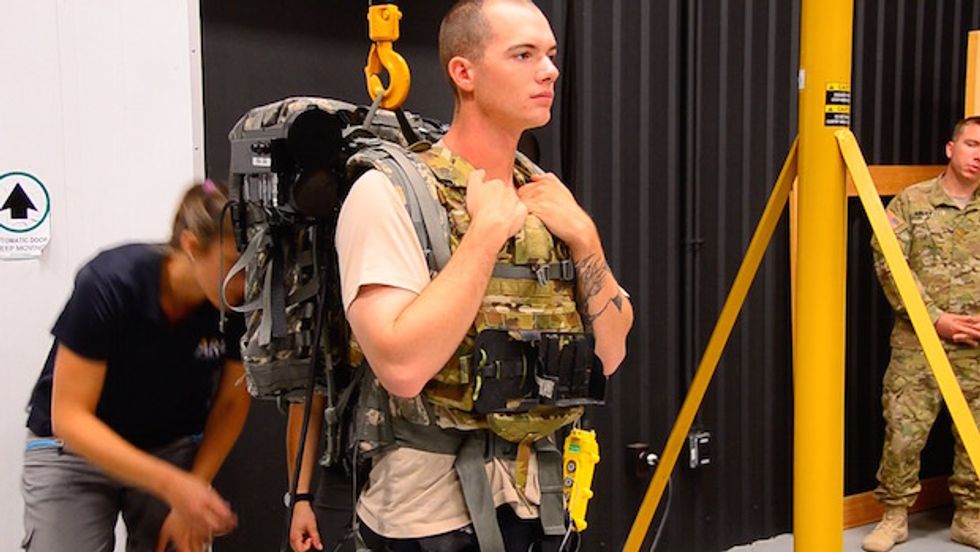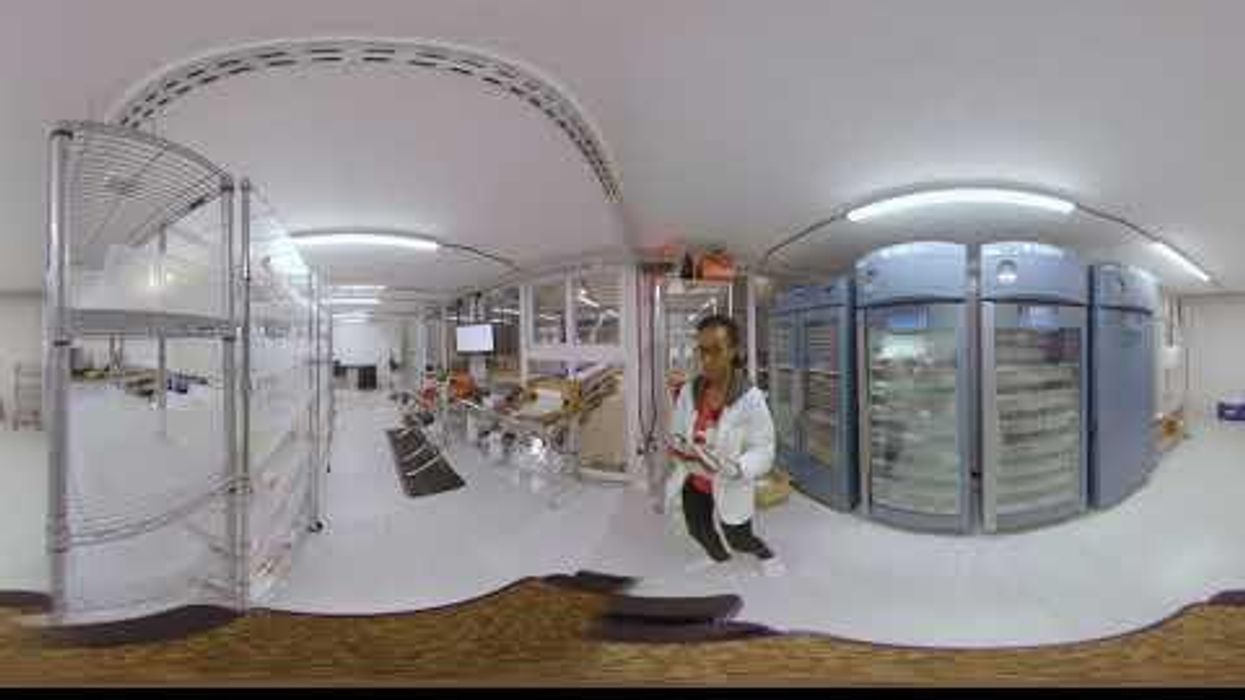Soldiers often have to hike extended distances while carrying heavy packs and equipment. This soft, lightweight exoskeleton takes on some of that weight, reducing the burden on a soldier’s body. It uses a system of powered cables to provide mechanical assistance, adding carefully timed pulling forces to natural movements so that the user’s own muscles expend less energy.
The exoskelton was developed by researchers from Harvard University’s Wyss Institute for Biologically Inspired Engineering under a contract from the Defense Advanced Research Projects Agency (DARPA).
Harvard’s exoskeleton prototype is undergoing performance testing by the U.S. Army Research Laboratory (ARL) at Aberdeen Proving Ground in Maryland. Soldiers wear the prototype underneath a full set of battle gear and hike a three mile course, including roadways and moderately rugged, wooded terrain. ARL technicians monitor the soldiers’ stride lengths and frequency, muscle activity, and energy expenditure. The goal is to allow soldiers to walk longer distances carrying heavy loads with less effort, while also minimizing risk of injury.



